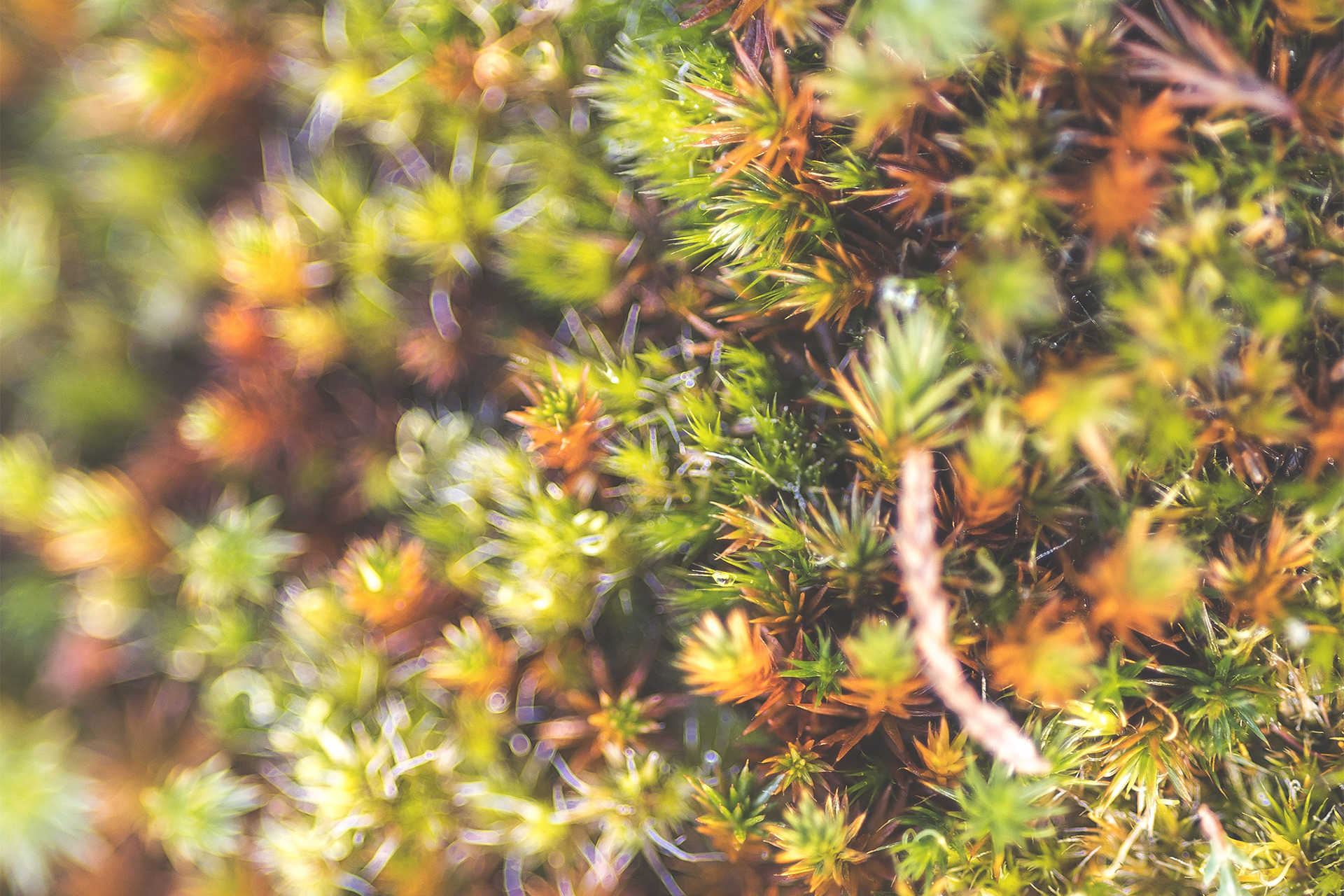David Eldridge of the University of New South Wales was excited to study it and assembled a team of 50 researchers and conducted a massive study published today in the journal Nature Geoscience.
Eldridge said in a press release published on the university's website on the date in question that they found that mosses are critical to the planet as a whole, as they resist climate change, absorbing carbon dioxide from the atmosphere, preparing the soil for plant growth by storing nitrogen and carbon, reducing the presence of pathogenic microorganisms, as well as protecting the soil from erosion.
Mosses can grow on hard surfaces (pixels)
What are mosses?
Mosses are the simplest form of plants, with leaves and root-like structures found in advanced plants (called vasculars), but differ from them in that mosses lack the microtubules found in vessels, in which the water they absorb moves from the soil.
In fact, moss do not need these tubes, as they derive water from air moisture, and the roots for them are just a means of fixing in the soil and have no role in absorbing water.
The growth of mosses requires moisture and shade, and they grow in wild as well as urban places, and they can be seen on hard surfaces, as they always find a cavity in a brick or on a wall or on the surface of a statue with little soil in which they grow, and they also grow in soft soils such as gardens and forests.
In residential places, people seek to remove them from the ground, but they always return after cleaning, and if ignored, they may lead to slipping, so they are dangerous in this context.
Mosses live in highly heterogeneous environments, in tropical forests, arid deserts and poles, but do not grow in salt water, and show great resilience to growth constraints that may kill others.
Some mosses dry their leaves and enter into an infinite latency state if drought prevails, and if environmental conditions improve, they return to grow again, and some were even able to return to grow in an environment destroyed by a volcanic eruption that wiped out most living organisms and was one of the first to grow again and restored the balance of the destroyed ecosystem.
Perhaps it can be said that mosses are indispensable, as they represent a shelter for small animals as well as livestock feed on them, and on an industrial scale they are used to purify water, and environmentally friendly dyes are extracted from them.
Cattle feed on mosses (pixels)
How was the study conducted?
The researchers collected samples from 123 sites around the world with varying temperature and humidity levels and located at different latitudes, with an area of about 9.4 million square kilometers (about the size of China), and compared the soil in which the mosses grew with those without them.
The research team found that where mosses were found, the nitrogen and carbon content of the soil increased, storing about 6.43 billion tonnes of carbon absorbed from the atmosphere, equivalent to overgrazing and deforestation.
The rate of analysis of organic matter has also increased and the soil content of pathogenic microorganisms has decreased, making it suitable for the growth of trees and weeds, while the researchers note that after the mosses prepared the soil, they disappeared, leaving room for other plants to grow.
Mosses prepare the soil and then disappear, leaving room for other plants (Pixels)
The future of study
The main driver of the study was the desire of researchers to know the difference between natural plant systems and those artificially man-made such as gardens and orchards, and after the important effects of the presence of mosses in natural environments were discovered, researchers will seek to know whether they play the same role in the green spaces created by humans, and they will also work to find the best ways to introduce mosses to eroded soil as a means of repairing them.

